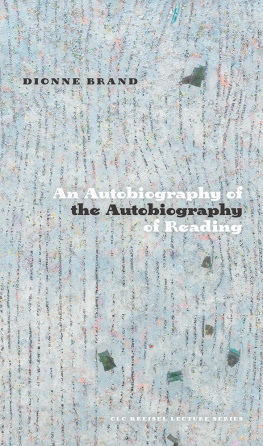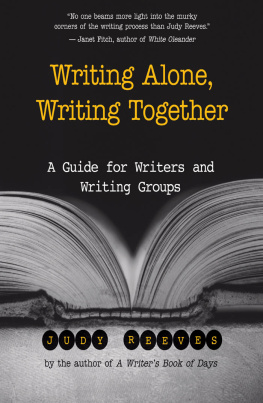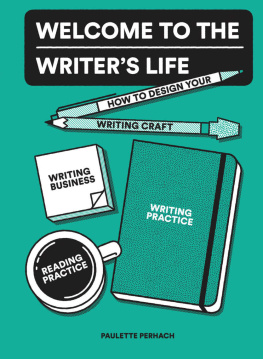


Introduction, author biographies, and selection copyright 2018 Tessa McWatt, Rabindranath Maharaj, and Dionne Brand.
Individual essays 2018 the contributors
This edition copyright 2018 Cormorant Books Inc.
This is a first edition.
No part of this publication may be reproduced, stored in a retrieval system or transmitted, in any form or by any means, without the prior written consent of the publisher or a licence from The Canadian Copyright Licensing Agency (Access Copyright). For an Access Copyright licence,
visit www.accesscopyright.ca or call toll free 1.800.893.5777 .

The publisher gratefully acknowledges the support of the Canada Council for the Arts
and the Ontario Arts Council for its publishing program. We acknowledge the
financial support of the Government of Canada through the Canada Book Fund ( CBF )
for our publishing activities, and the Government of Ontario through
the Ontario Media Development Corporation, an agency of the Ontario Ministry
of Culture, and the Ontario Book Publishing Tax Credit Program.
Library and Archives Cana da Cata loguing in Publication
Luminous ink : writers on writing in Canada / Tessa McWatt, Rabindranath Maharaj, and Dionne Brand, editors.
Issued in print and electronic formats.
isbn 978-1-77086-519-8 (softcover). isbn 978-1-77086-520-4 (html)
. Canadian literature st century History and criticism.
. National characteristics, Canadian, in literature. 3. Canada In literature.
. Authors, Canadian st century. i . McWatt, Tessa, 1959 , editor
ii . Maharaj, Rabindranath, 1955 , editor iii . Brand, Dionne, 1953 , editor
ps8077.1.l86 2018 c810.9006 c2018-900022-8
c2018-900023-6
Cover design: angeljohnguerra.com
Interior text design: Tannice Goddard, bookstopress.com
Printer: Friesens
Printed and bound in Canada.
Cormorant Books Inc.
10 St. Mary Street, Suite 615, Toronto, Ontario, M4Y 1P9
www.cormorantbooks.com
CONTENTS
Introduction: Luminous Ink ix
Tessa McWatt, Rabindranath Maharaj, and Dionne Brand
The Salmon Eaters
Eden Robinson
Snow Squalls in May
Lisa Moore
Where Is Home and How Do I Get There?
Greg Hollingshead
A Chair and a Bird
Madeleine Thien
Its Like Feathers Passing Over Me
Richard Van Camp
As Man
David Chariandy
Writing in Montreal
Marie Hlne Poitras
(Translated by Susanne de Lotbinire-Harwood)
Why?
Sheila Fischman
First Landguage
Hiromi Goto
An Ambiguous Voice
Stephen Henighan
Portrait of the Artist as a Young Corpse
Heather ONeill
Lorem Ipsum
Nicole Brossard
(Translated by Susanne de Lotbinire-Harwood)
Night Thoughts: Some Notes from the Margins
M G Vassanji
The Return
Judith Thompson
Writing in Quebec
Rawi Hage
Survival: The Origin Story
Margaret Atwood
Why I Write
Lee Maracle
Living History
George Elliott Clarke
Six Scenarios for the End of Civilization as We Knew It
Nino Ricci
Mind the Gap
Pascale Quiviger
Who Will Wave Back? Notes Toward Why I Write
Rita Wong
Wandering Home: On the Doorstep of a Canadian Atheist in Mid-winter
Camilla Gibb
Of Dislocation and Creation
Lawrence Hill
Known Stranger
Michael Helm
A Port Accent
Michael Ondaatje
False Consciousness
Leanne Betasamosake Simpson
About the Authors
About the Editors
Acknowledgements
INTRODUCTION
LUMINOUS INK
Tessa McWatt, Rabindranath Maharaj,
and Dionne Brand
Literature is not only a mirror; it is also a map, a geography of the mind.
Margaret Atwood, Survival
TO BE A WRITER LIVING in, writing from, or about, Canada, now, is to live at a vexed and precarious junction of the past, present, and future. It is to sense and to track what was, what is, and what, perhaps, will be. This junction is a place of many revelations, the coordinates of which are not always clearly defined. Life phenomena are what writers track; and geographies. Geography consists of maps with borders, depths, gradations, topographies and people, phenomena, spatial analyses, tides, and the study of change and motion. At the best of times, in the best instances, writers can be the sonar and remote sensors of temporal geography.
At the heart of this anthology are a series of questions about the work of words. What does it mean to be a writer now in this country? What can the literature being written today the stories, the novels, the poetry, the drama, the creative non-fiction tell us about Canadas social arrangements, about its political and aesthetic shapes and its preoccupations? In the twenty-first century is a national literature possible, let alone desirable?
In 2015, as faculty members at the Banff Centre Writers Studio, the editors of this anthology gathered over meals and mountain walks and considered the configuration of what has come to be called CanLit. In a Japanese restaurant where a sushi train offered, with each turn, some new and tempting dish, we talked over the changes that had taken place in the writing community since Margaret Atwood published Survival in 1972 that seminal work that marked a call for a national literature and ushered in the idea of CanLit. We talked about place and politics and aesthetics; about our different positions on and location in nation, and to the nationmaking projects of Canadas government and cultural institutions. We talked about absences in the official record of CanLit and, in that light, we summoned Wilson Harris and what he called the unfinished genesis of the imagination in his essay Creoleness: The Crossroads of a Civilization? We talked about universality as Jacqueline Rose proposes it in States of Fantasy : One way to come at the concept of universality she writes, might be to note, on each separate occasion, the history which provokes it. We considered the definition of universality that had gathered around the project of CanLit as representative only of and in Euro-Canadian experience. What makes a writer a Canadian writer? What makes the writing Canadian? Is it place? Is it preoccupation with and/or reference to the land; is it modality of voice or of experience? Is it something more elusive, a sensibility that shifts with the tides but yet holds some faint echo of the land; a register that is inconspicuous and hidden perhaps deliberately but which works its way into stories, conversations, insights? What are the qualities, ideas, issues, and landscapes one engages when writing from this physical space? Where dispossession of aboriginal land subtends all references, what is landscape? What is land as metaphor? Depending on where the writer is located in the body, in the land, in history what literary questions does the writer encounter? In the changing demographic of the population and the growing urgency of writing about race, class, colonialism, sex and gender, and the ways they matter, how are writers responding to these crucial concerns?
Next page








